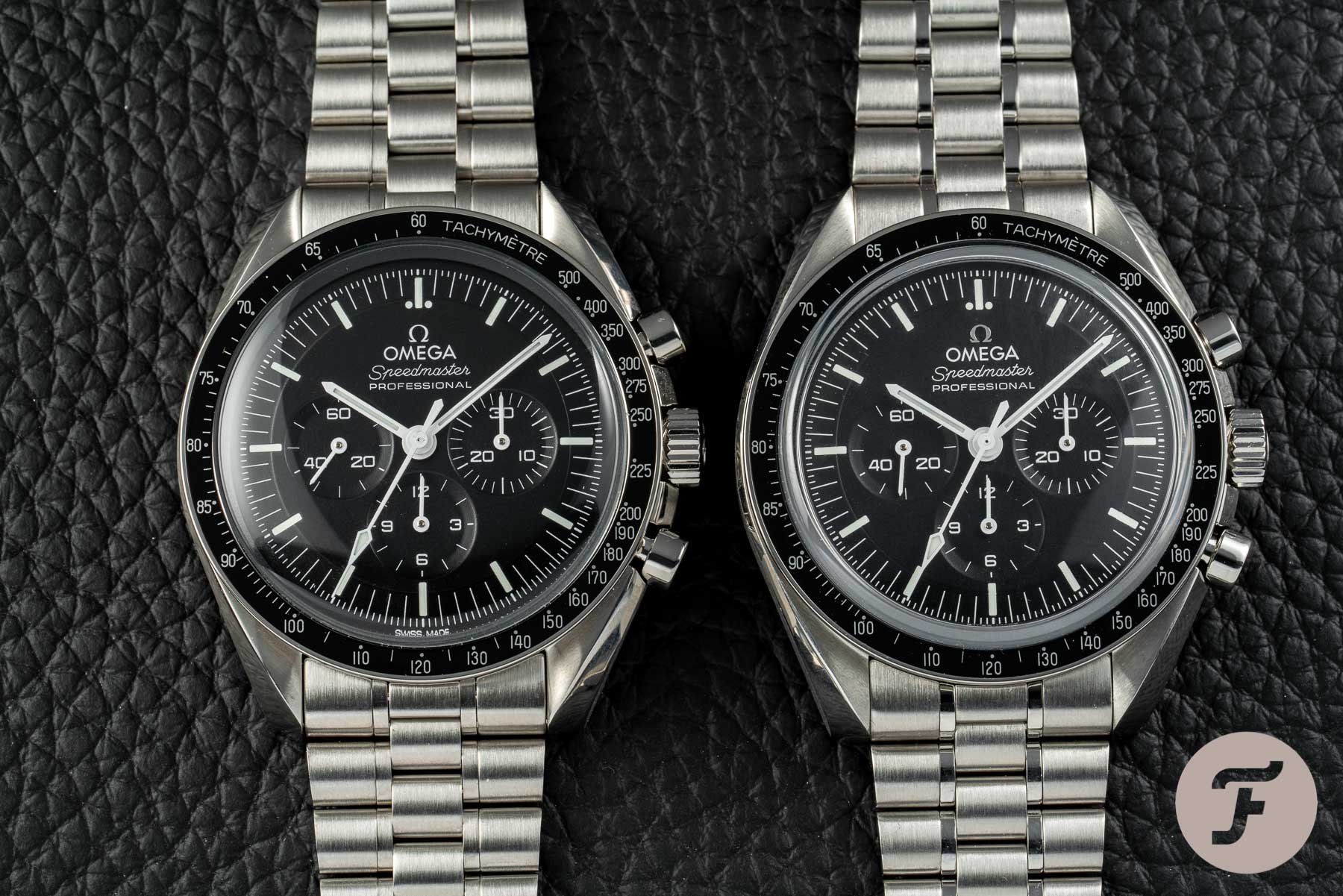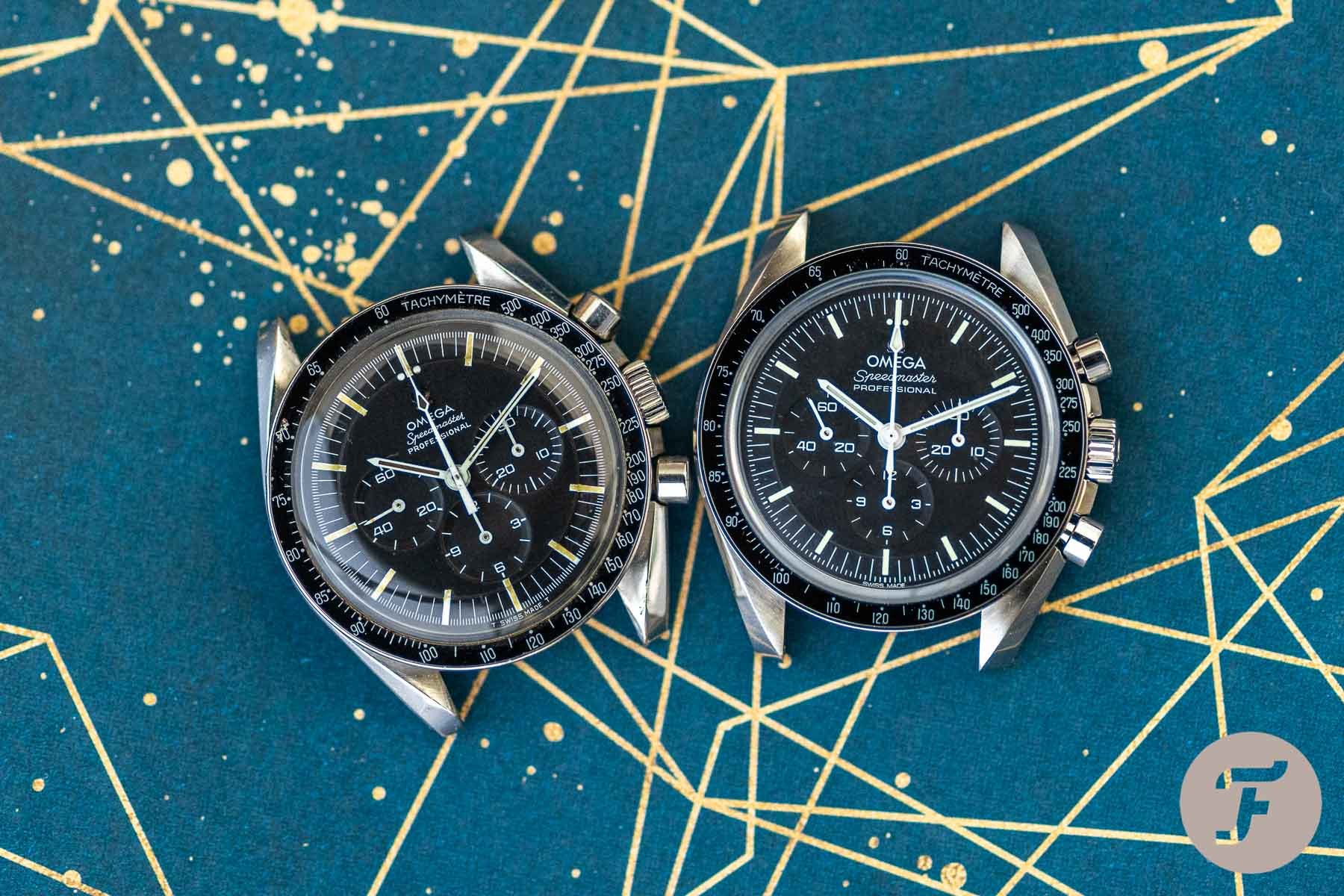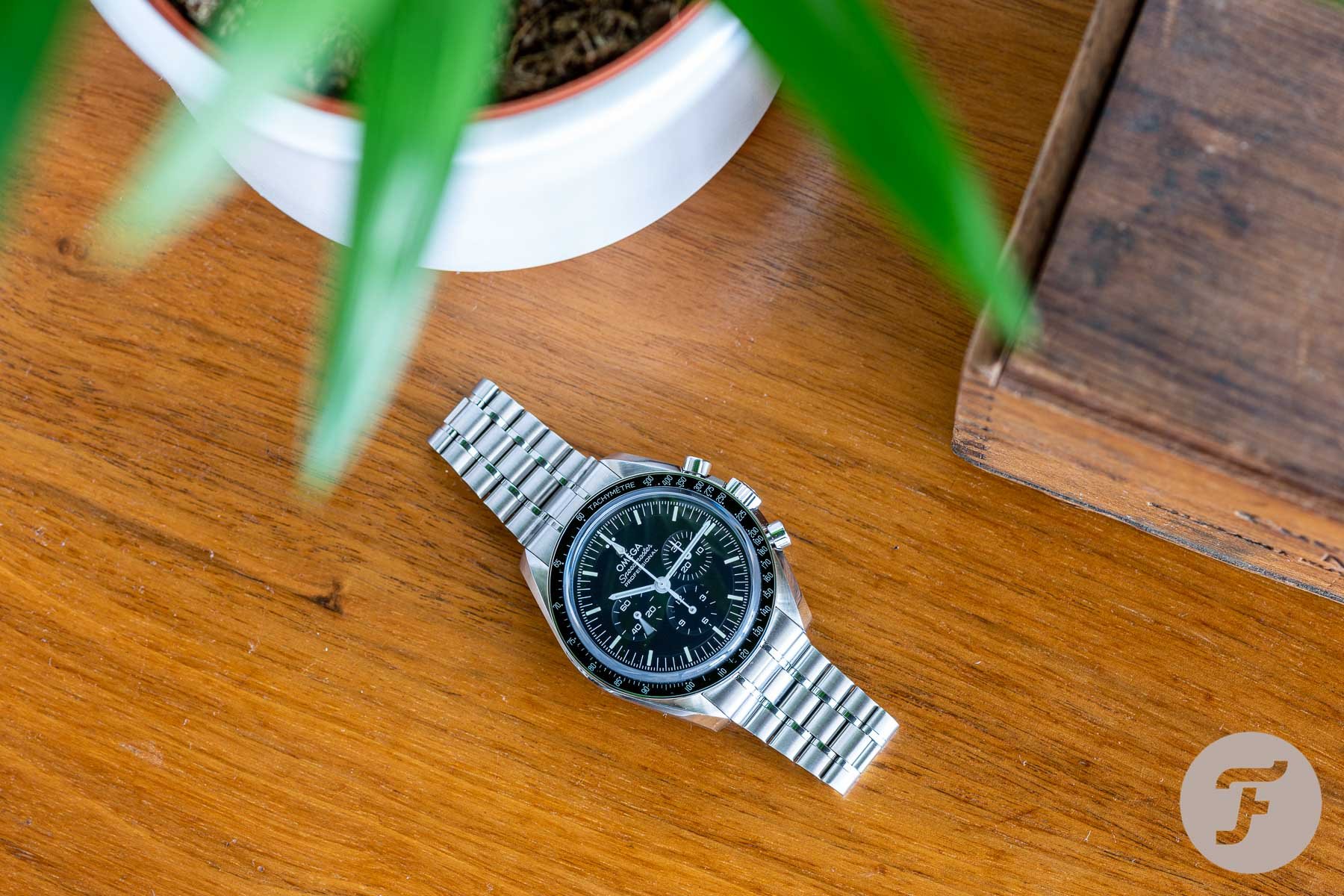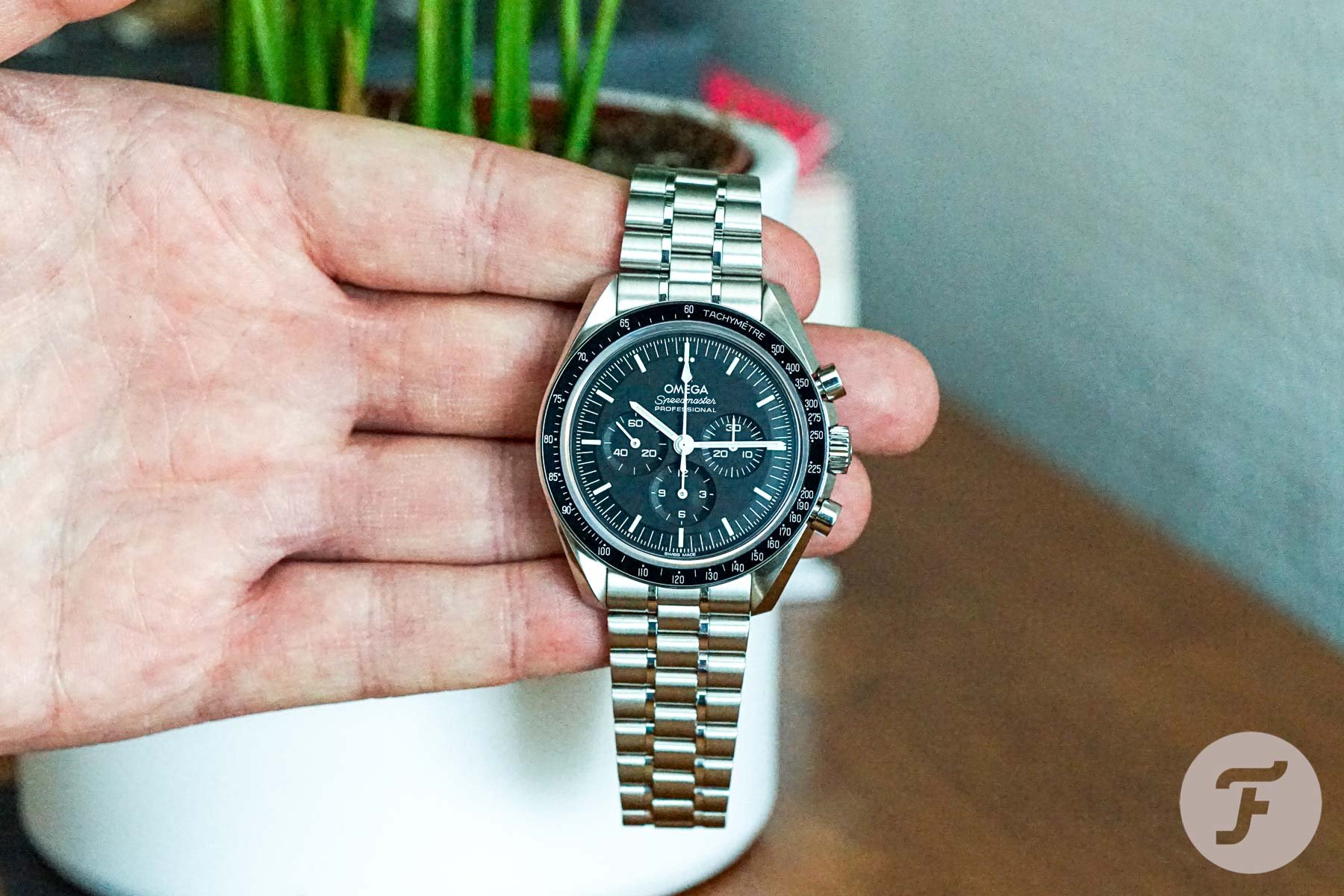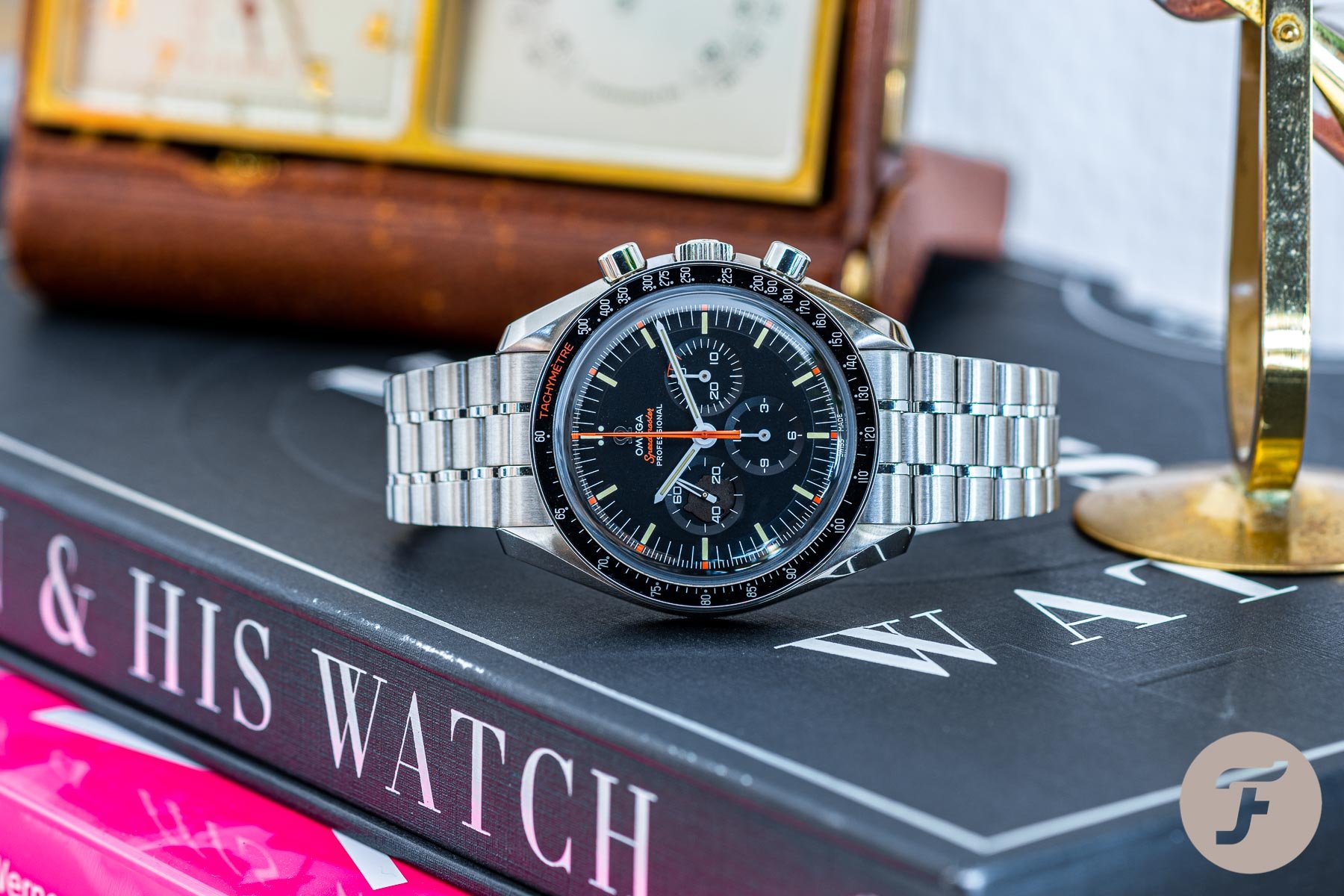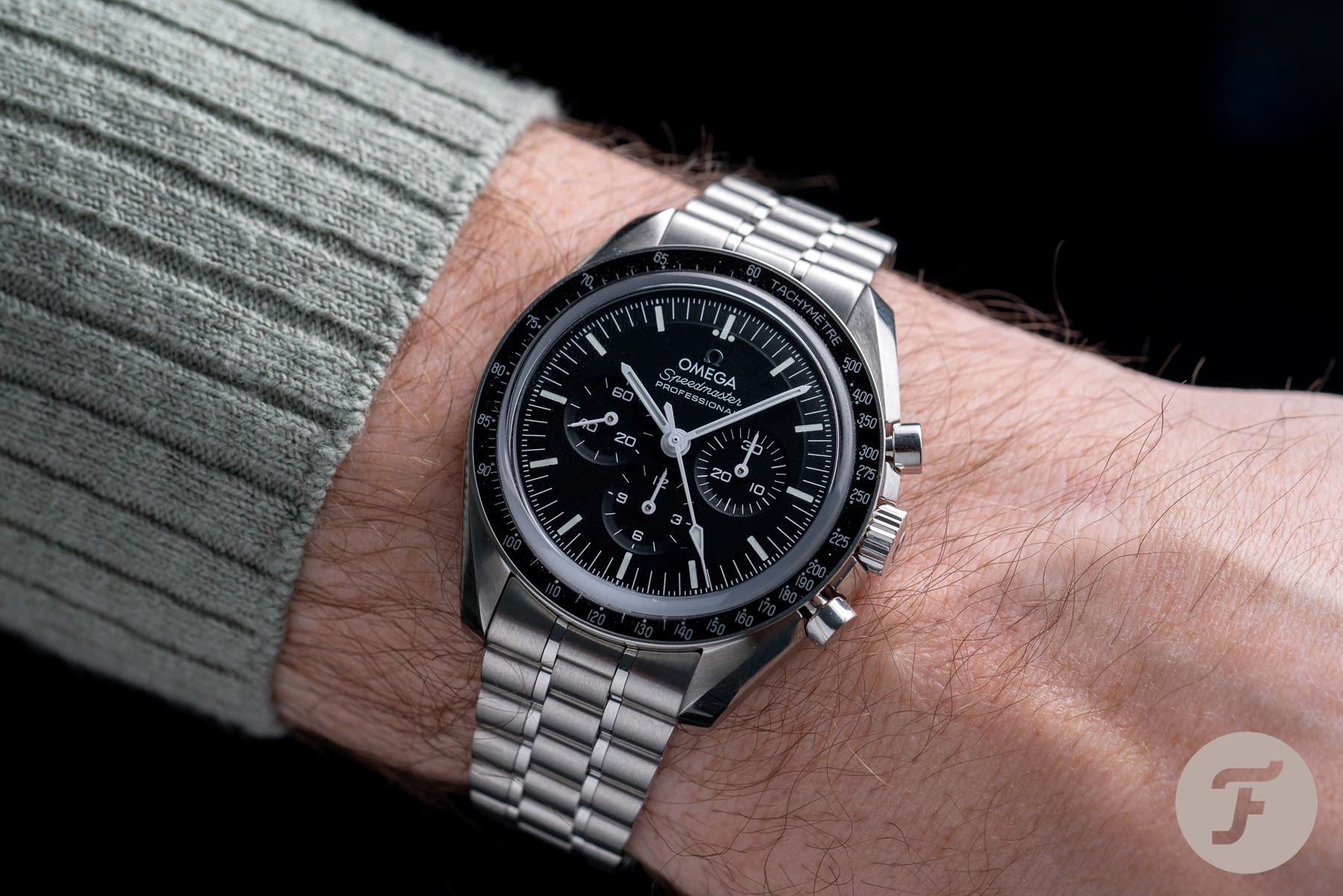My Thoughts On The New Omega Speedmaster Sapphire — Why I Love The Watch
“Oh, no. Not another article praising the new Speedmaster,” I hear you say, as your eyes snap to the title of my article. Without a doubt, this piece is going to talk about the current Speedy. So, if you are fed up with the topic, feel free to navigate back to the main page and look for another write-up. No hard feelings. However, let me quickly try to sum up what I’d like to talk about if you’ve stuck with me this far.
The main idea behind getting the latest Speedmaster was to check it out, of course. I wanted to see a few things up close, namely: how is it compared to a vintage piece? Does the bracelet feel as good as it looks? Can you use the bracelet on other models? Is this iteration of the Speedmaster worth the extra money you need to pay to get one? If you wonder about at least one of the questions above, I hope you’ll find an answer in this article.
Getting a new Speedmaster Pro Sapphire Sandwich
You see, nowadays, it is tougher than it has ever been for us watch journalists to get a closer look at the watches that interest us. We cannot travel to the manufacturers or visit events where we usually got the ammo for the following year. This means that if we want to put our hands on a piece, we must request it from the brand. Alternatively, we could visit an AD, assuming that
A) They already have said piece in stock. And,
B) The AD is actually open.
Sadly, neither A nor B seem common eventualities in Germany. Consequently, I had to request a Speedmaster from the German office. I knew that getting both watches was going to be out of the question (they are still among journalists’ most requested pieces, after all). While I’m more of a hesalite guy, it made sense to get the sapphire crystal version. Why? Because, looks-wise, that one is the closest to my vintage 1968 Speedmaster.
Pound for pound
While it might seem silly to compare a new watch to a vintage version, we (and by that, I mean, all of us watch people) do this all the time. The new sapphire Speedy Pro is not a vintage reedition like the 321 Ed White. Rather, it is the latest iteration of a legendary model. It has been inspired by the vintage version. Those design cues are clearly visible on the new Speedmaster.
Placing the two models side by side leads to an unavoidable comparison. How are we, as watch lovers supposed to take this? Should we be thrilled that modern tech and manufacturing techniques have been applied to a classic dial/case/bracelet combination, or should we be seething that for more money we get nothing more than more of the same. I’ve heard both arguments well made and it took me a while to decide where I came down on the subject.
I think it is a good thing. We can argue about the value of true novelty all you like, but I can’t get away from one thing: the product itself. Quality matters. Why not take an excellent design and have it made, well, excellently?
To me, the new Omega Speedmaster blends old and modern perfectly. In fact, I can’t get enough of its vintage elements. I’d love to see the vintage-style bezel, the stepped dial, or the applied logo on the sapphire sandwich. I’m a bit disappointed that the hesalite did not get the same steel Omega logo. Besides, this W style is different from the one I have on my watch. Regardless, those are teensy, tiny details when one considers the big picture.
Fun beyond the watch
We could dissect the watch and put every tiny detail under a microscope, but whether you like the timepiece or not is a subjective thing at the end of the day. Consequently, the same goes for the bracelet. Though there might not have been too much disapproval about the previous Omega Speedmaster, owners often criticized its bracelet. Truth be told, the recent bracelet was not Omega’s best work, but it did kind of hang together well (enough) with the watch head.
However, people frequently objected to the shape of its links or the fact that it did not taper. For specific new models, the brand went with a flat link remake, but this could not have been the case for a regular production model. So, the design team completely overhauled the bracelet, with nods to the brand’s past unavoidably present, but seemingly more removed than the reference points of the watch head.
The weight distribution feels the same as before. Furthermore, the watch feels more, for lack of a better word, “Speedmastery” with this bracelet. I love vintage, and as such most of my watches are from decades ago. This could be the reason why this new Speedmaster look appeals to me.
Yes, it feels a bit neo-vintage, but hey, the whole Speedmaster concept is one that hasn’t changed much since the late ’60s. In other words, the watch head with the vintage style bracelet reminds me of those old Speedies I love to see from the ’60s, ’70s, or even ’80s. I wondered if this could change the look of a modern Speedmaster if one could swap the bracelet. So, I did just that. I took my Ultraman and threw the new sapphire Speedmaster’s bracelet on that. You’ll be the judge, but I loved what I saw.
Further thoughts
To sum up, what I have said so far, the design has elements of vintage which appeal to guys like me, but the overall feel is still very modern, albeit traditional. This goes for the watch as well as the bracelet. Something that you might love to have in your collection so you could throw it on to other Speedmasters from time to time. Still, this should not be enough to justify the hefty price increase. That’s why Omega did work on the inside of the Speedy as well as its exterior.
The trusty 1861 has been replaced by the 3861, a Co-Axial Master Chronometer movement. The caliber is anti-magnetic up to at least 15,00 gauss, chronometer-certified by METAS, has a longer power reserve, and so on.
Pricing
In Germany for the hesalite model went from €4,900 to €6,100. If you wanted to get this sapphire crystal version, the difference would be €5,700 vs. €7,000. Now I won’t analyze the price difference. Many have done this before me. All you need to know, dear reader, if the new Speedmaster is worth the extra €1,200-1,300 to you. I must admit that in the beginning, I was skeptical about this as well.
Twelve-hundred or so Euros is a lot of money, I thought. Right now, I think I’m at the point where I understand why Omega made this move. Still, the difference is steep, no doubt about that. But I’m trying to familiarize myself with the whys, and it slowly starts to make sense. I needed to see the watch in person and try it on for that. If you’re still unsure, I suggest you do the same. Check out Omega’s selection by clicking here.

